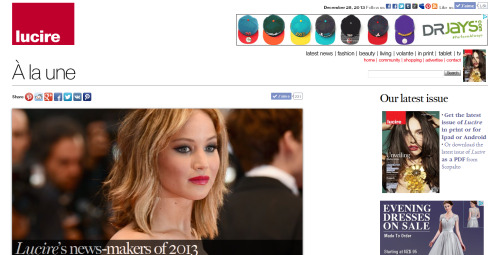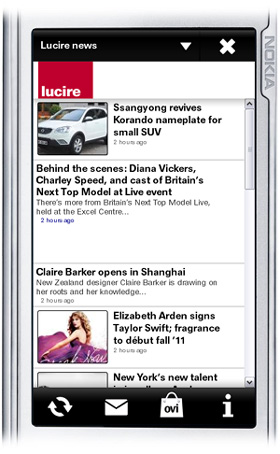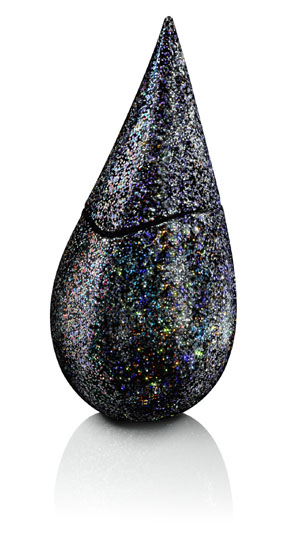For years, I resisted doing a blog on Lucire. Let’s say I wasn’t a convert.
In the 1990s, online publishing was largely an educated person’s game. We were already publishing op-eds in Lucire and had done so for years. Blogging, it seemed, was the dawn of what became known as John Gabriel’s Greater Internet F***wad Theory: anonymous people able to say whatever they liked, without civility, thought or veracity. Some of this was covered in a recent print edition of Lucire.
While many of the successful blogs didn’t fit into that category, let’s say I remained unconvinced. Of course I believe that everyone should have a right of free speech. I am just not in to cutting someone down as part of that expression.
Lately, with my own blog netting a few successes and, most importantly, a general rise in interest in Web 2·0 functionalities among the younger members of the Lucire team, I thought we should at least experiment and see what could come of it.
Of course, I always warn people that we should never become slaves to technology: that it is here to serve us, not the other way around. Once we become slaves to it, we might do crazy things: put up with less than ideal photographs on a camera cellphone, forget how to hum a tune because we need to hear it on an iPod first, lose our ability to schedule anything more than a day ahead because of the immediacy of a cellphone, pay an exorbitant amount for a technology marginally above Morse code but has a fancy moniker of text messaging, or spend hours updating a MySpace page and being totally unproductive.
While I realize that that’s the reality for a lot of people, I didn’t want us being a slave to this blog. There is no dire need to update it, for a start. We might, sometimes; we might not, other times. The real purpose of the Lucire Insider blog is explained in the name: to share some thoughts on behind the scenes at Lucire. In that respect, this is a complement to our existing blogs listed at right, Facebook group and the Lucire Reader Forum and our other interactions with you, the public. It is not the new StyleTalk service that I had mentioned earlier in 2007. It is not meant to replace any of the existing services—and we’re going to keep a tight rein on how much time we spend here.
I should also note that this is a place where we are going to be quite raw: this is Lucire staffers speaking in an unedited fashion, done to a lower standard than the magazine, and often without a spellcheck. This is op-edding without intermediaries, allowing you a more direct connection to us internally.
We may repost or cross-post things from our other blogs if we think it will be of interest, but generally, the above will hold true.
Now that I have set the tone, I look forward to further interaction with you.
Our Cal’s in Ride with the Devil









????? ?? ??? ?-???? ?????? ????? ????? ?????! ???????? 300!!!
?????? ????! ????????? ????????????? ??????? ???????! ?????????? ?????????? ????????? ?? ??? ?-???? ?????? ????, ? ???????? – [email protected] , [email protected] , [email protected]
??????????? ??????? ??? ?????? ?????? ??? ???? ? ??3 ??????? :(
?????! ;)
These are nothing to do with us. The addresses you wrote about, [email protected], [email protected], and [email protected] do not exist.
When spammers send messages, they use a forged ‘From:’ address. What you need to look for are the headers. Within there is the real sender’s IP address.
Like you, we received over 300 emails today as a result of the faking of another address we use. These were all bounces from invalid addresses.
The majority of the bounces we got were in Russian, so I am assuming that this was caused by spammers in your own country who target their own first.
Helga, here are the headers to one of the bounces:
Return-Path: …
Received: from host-77-41-70-54.qwerty.ru (host-77-41-70-54.qwerty.ru [77.41.70.54] (may be forged))
by ns2.skynet.cz (8.14.1/8.14.1) with ESMTP id m37JRoUT022082
for <>; Mon, 7 Apr 2008 21:27:51 +0200 (CEST)
(envelope-from …)
Message-ID: <000901c898e6$04e51809$d6d78698@qfnhk>
From: =?koi8-r?B?5M3J1NLJyiDyz83Bzs/Xyd4=?= <>
To: <>
I’ve taken out the email addresses that were in the ‘From’ and ‘To’ fields so they don’t get picked up by spammers. In such a case, the real sender is at host-77-41-70-54.qwerty.ru.
??????!
?? ???????????? ? ?????????? ??????? ??????,
??????? ??????????
??? ??? ????? ?????? ?????????? ?? ??????? ? ??? ?????? ?????????? :(
????????))
You’re welcome. Do you mean information about the spams you received? It depends on the program you are using. I am not sure of the Russian translation but there should be an option in your email program on viewing “headers” in an email. Those headers should look like the ones that I quoted in comment no. 3 above. (However, I suspect that if the spam has stopped, then the accounts responsible have been blocked.)
One page I can recommend is from SpamCop, though it is in English:
http://spamcop.net/fom-serve/cache/19.html